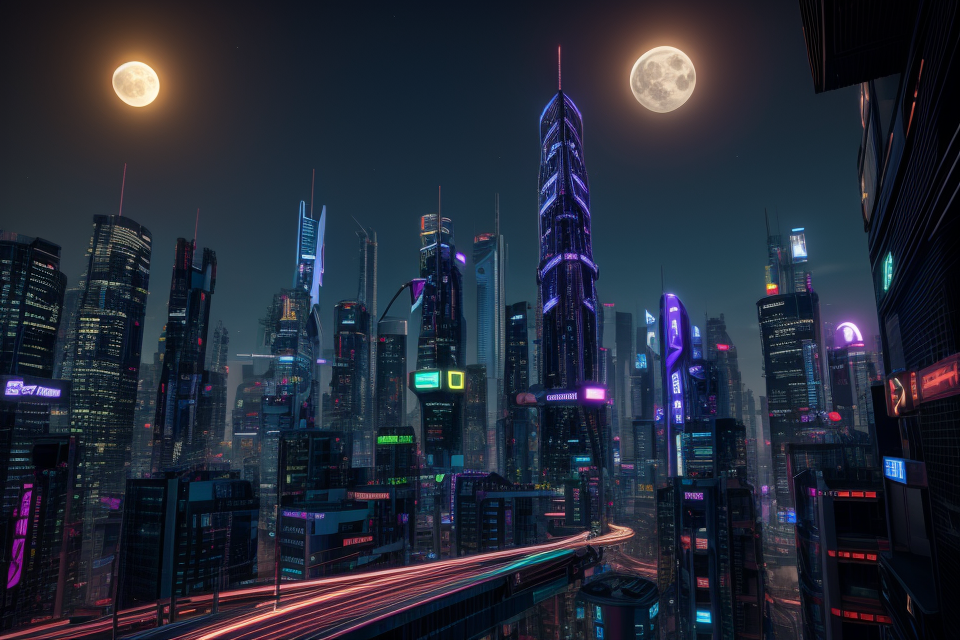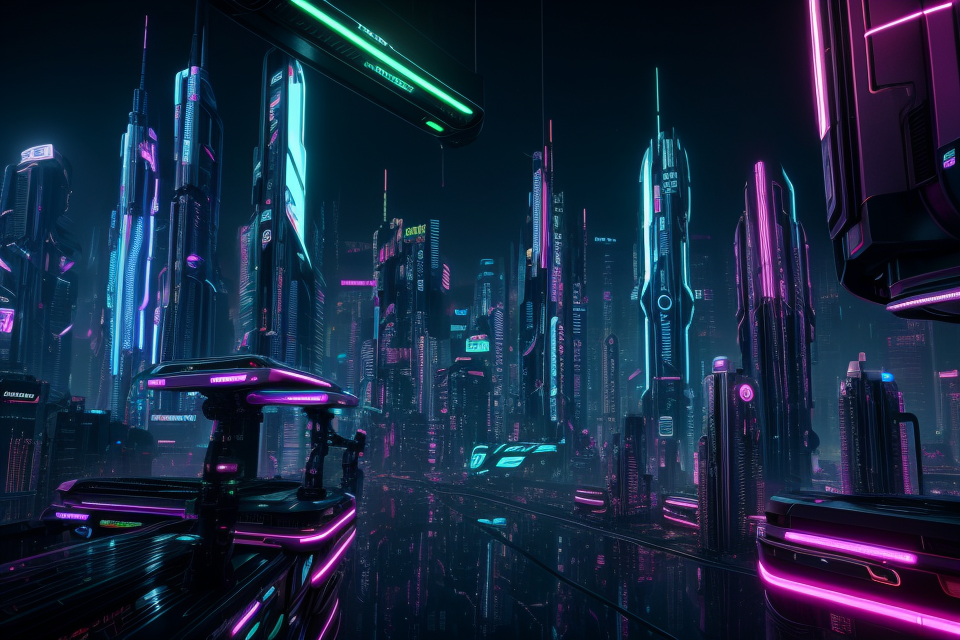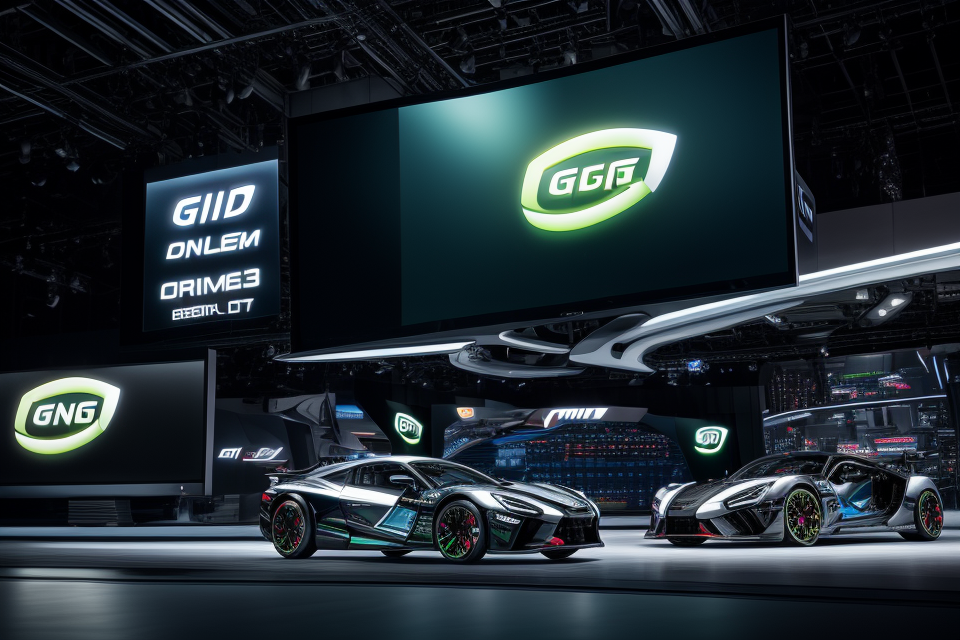
The future of GPU technology is a topic that has been generating a lot of buzz in the tech world. GPUs, or Graphics Processing Units, have come a long way since their inception and have become an integral part of our daily lives. From gaming to scientific simulations, GPUs have revolutionized the way we process and visualize data. As we move forward, the future of GPU technology looks brighter than ever before. With advancements in AI, machine learning, and other emerging technologies, GPUs are poised to become even more powerful and versatile. In this article, we will explore the exciting possibilities that the future holds for GPU technology and how it will shape our world.
The future of GPU technology is likely to be shaped by advancements in artificial intelligence, virtual reality, and the Internet of Things. GPUs will continue to play a critical role in powering these technologies, and as a result, we can expect to see continued improvements in performance, efficiency, and functionality. Additionally, as new applications and use cases emerge, we can expect to see the development of new types of GPUs and GPU technologies to meet these demands. Overall, the future of GPU technology looks bright, with exciting developments on the horizon.
The Evolution of GPUs
The history of GPUs
GPUs, or Graphics Processing Units, have come a long way since their inception in the 1980s. The first GPUs were simple graphics co-processors that were designed to handle the basic graphics needs of computers. However, as computer graphics became more complex, the need for more powerful GPUs became apparent.
In the 1990s, the rise of 3D graphics games and Hollywood movies fueled the demand for more advanced GPUs. Companies like NVIDIA and ATI (now AMD) began to develop GPUs that were specifically designed for 3D graphics rendering. These GPUs were able to perform complex mathematical calculations much faster than traditional CPUs, making them ideal for gaming and entertainment applications.
As the demand for more powerful GPUs continued to grow, NVIDIA and AMD began to develop new programming models that would allow developers to harness the power of GPUs for a wider range of applications. In 2006, NVIDIA introduced CUDA, a parallel computing platform that allows developers to write programs that can run on GPUs. AMD followed suit with its own programming model, called Stream SDK, which allows developers to write code that can run on both CPUs and GPUs.
Today, GPUs are used in a wide range of applications, from gaming and entertainment to scientific research and machine learning. As the demand for more powerful and efficient computing continues to grow, it is likely that GPUs will play an increasingly important role in the future of computing.
Current trends in GPU technology
The growth of deep learning and AI
Deep learning and artificial intelligence have been rapidly growing in recent years, leading to an increased demand for more powerful GPUs. The growth of deep learning and AI can be attributed to the ability of GPUs to process large amounts of data in parallel, making them ideal for training complex neural networks. This has led to the development of specialized GPUs, such as NVIDIA’s Tesla V100, which are specifically designed for deep learning and AI workloads. As the demand for AI and machine learning continues to grow, it is likely that the demand for powerful GPUs will continue to increase.
The increasing demand for real-time ray tracing
Real-time ray tracing is a technique used to simulate the behavior of light in a virtual environment, allowing for more realistic graphics in video games and other applications. With the increasing demand for more realistic graphics, there has been a growing need for GPUs that can handle real-time ray tracing. NVIDIA’s RTX series of GPUs, such as the RTX 2080 Ti, are specifically designed for real-time ray tracing and have become popular among gamers and developers. As the demand for more realistic graphics continues to grow, it is likely that the demand for GPUs that can handle real-time ray tracing will continue to increase.
The rise of virtual and augmented reality
Virtual and augmented reality applications require powerful GPUs to render complex graphics in real-time. As the technology continues to improve and become more mainstream, there is likely to be an increased demand for GPUs that can handle the processing requirements of virtual and augmented reality applications. This could lead to the development of specialized GPUs designed specifically for virtual and augmented reality workloads. Additionally, the growth of cloud-based virtual and augmented reality services could also drive demand for more powerful GPUs in data centers.
The Future of GPUs
Predictions for the next decade
Continued growth in demand for AI and machine learning
One of the most significant predictions for the future of GPU technology is the continued growth in demand for artificial intelligence (AI) and machine learning (ML) applications. As AI and ML become increasingly integral to various industries, such as healthcare, finance, and transportation, the demand for powerful GPUs that can handle complex computations will continue to rise. This is because GPUs are well-suited for the parallel processing required for AI and ML tasks, making them an essential component in data centers and other computing environments.
Increased use of real-time ray tracing in video games and movies
Another area where GPU technology is expected to see significant growth is in the use of real-time ray tracing in video games and movies. Ray tracing is a technique that simulates the behavior of light in a scene, producing more realistic and accurate reflections, shadows, and other visual effects. Until recently, ray tracing has been too computationally intensive to be used in real-time applications, but advances in GPU technology have made it possible to achieve real-time ray tracing at high resolutions. As game developers and movie studios continue to push the boundaries of visual fidelity, the demand for GPUs that can handle real-time ray tracing will only continue to grow.
Expansion of virtual and augmented reality applications
Finally, the future of GPU technology is likely to see continued expansion in the use of virtual and augmented reality (VR/AR) applications. VR and AR technologies rely heavily on GPUs to render complex 3D graphics in real-time, making them a significant area of growth for GPU manufacturers. As VR and AR technologies become more mainstream, the demand for GPUs that can handle the complex graphics rendering required for these applications will continue to rise. Additionally, the development of new VR and AR hardware, such as head-mounted displays and smart glasses, will likely drive further innovation in GPU technology.
Challenges and obstacles
- Power consumption and heat dissipation
GPUs are known for their ability to perform complex calculations at high speeds, but this comes at a cost. The increased computational power requires more energy, leading to higher power consumption and heat dissipation. This poses a challenge for both hardware and software developers as they must find ways to minimize the energy usage while maintaining performance. - The need for new programming models and APIs
As GPU technology continues to evolve, there is a growing need for new programming models and APIs that can take advantage of its capabilities. Developers must be able to write efficient code that can leverage the parallel processing power of GPUs. This requires a shift in thinking and new tools to support this shift. - The impact of new technologies like quantum computing
Quantum computing is an emerging technology that has the potential to significantly impact the field of GPU technology. While quantum computing is still in its infancy, it has the potential to outperform classical computing in certain tasks. This could lead to a shift in the focus of GPU development, as researchers and developers explore new ways to integrate quantum computing with GPU technology.
Overall, the challenges and obstacles facing GPU technology are significant, but they also present opportunities for innovation and growth. As hardware and software developers work to overcome these challenges, they will push the boundaries of what is possible with GPU technology, paving the way for new applications and advancements in the field.
Opportunities for innovation
GPUs have revolutionized the computing world, providing the processing power necessary for tasks such as deep learning and high-performance computing. As the technology continues to advance, there are numerous opportunities for innovation in the future of GPUs.
Development of new algorithms and techniques for AI and machine learning
One area of significant opportunity for innovation is the development of new algorithms and techniques for AI and machine learning. With the increasing demand for more powerful and efficient AI systems, there is a need for new algorithms that can take advantage of the parallel processing capabilities of GPUs. Researchers are exploring new approaches to deep learning, such as neuromorphic computing, which aims to create hardware that mimics the structure and function of the human brain.
Another area of opportunity is the development of new techniques for machine learning, such as transfer learning and reinforcement learning. Transfer learning involves taking a pre-trained model and adapting it to a new task, which can significantly reduce the amount of training required for a new model. Reinforcement learning, on the other hand, involves training an agent to make decisions based on rewards and punishments, and has been successfully applied to a wide range of tasks, including game playing and robotics.
Improving real-time ray tracing and other rendering techniques
Another area of opportunity for innovation is improving real-time ray tracing and other rendering techniques. Ray tracing is a technique used to simulate the behavior of light in a scene, and is essential for creating realistic graphics in computer graphics and virtual reality. However, traditional ray tracing techniques can be computationally intensive, making it difficult to achieve real-time performance.
GPUs offer a powerful solution to this problem, as they can perform thousands of calculations in parallel. Researchers are exploring new techniques for using GPUs to accelerate ray tracing, such as hardware-accelerated ray tracing and hybrid rendering techniques that combine ray tracing with rasterization. These techniques have the potential to significantly improve the quality and realism of computer graphics and virtual reality experiences.
Creating new applications for virtual and augmented reality
Finally, there is significant opportunity for innovation in creating new applications for virtual and augmented reality. Virtual reality (VR) and augmented reality (AR) rely on complex graphics and real-time rendering, making them a natural fit for GPU technology. However, there is still much to be explored in terms of creating new and innovative applications for these technologies.
One area of opportunity is in creating more immersive and interactive VR and AR experiences. This could involve developing new techniques for tracking and mapping the user’s movements, or creating more advanced AI systems that can interact with the user in real-time. Another area of opportunity is in creating new types of VR and AR experiences, such as those that incorporate more sensory feedback or allow for more natural user interfaces.
Overall, the future of GPU technology holds many opportunities for innovation in areas such as AI and machine learning, real-time rendering, and virtual and augmented reality. As the technology continues to advance, we can expect to see new and exciting applications and use cases emerge.
FAQs
1. What is a GPU?
A GPU (Graphics Processing Unit) is a specialized type of processor designed to accelerate the creation and rendering of graphics and images. It is used in a wide range of applications, including gaming, video editing, scientific simulations, and artificial intelligence.
2. What is the current state of GPU technology?
GPU technology has come a long way since the first GPUs were introduced in the mid-1990s. Today’s GPUs are incredibly powerful and are capable of processing massive amounts of data at high speeds. They are used in a wide range of applications, from gaming and video editing to scientific simulations and artificial intelligence.
3. What are some of the key trends in GPU technology?
One of the key trends in GPU technology is the increasing use of machine learning and artificial intelligence. GPUs are well-suited to these types of applications because they are able to perform many calculations at once, making them ideal for training neural networks and other types of AI models. Another trend is the increasing use of GPUs in cloud computing, where they are used to provide powerful graphics processing capabilities to a wide range of applications and users.
4. What is the future of GPU technology?
The future of GPU technology is likely to be characterized by continued innovation and development. There are a number of potential areas where GPUs could see increased use in the future, including virtual reality, autonomous vehicles, and the Internet of Things. In addition, there is likely to be continued development of new types of GPUs, such as specialized processors for AI and machine learning. Overall, the future of GPU technology looks bright, with many exciting new applications and innovations on the horizon.


